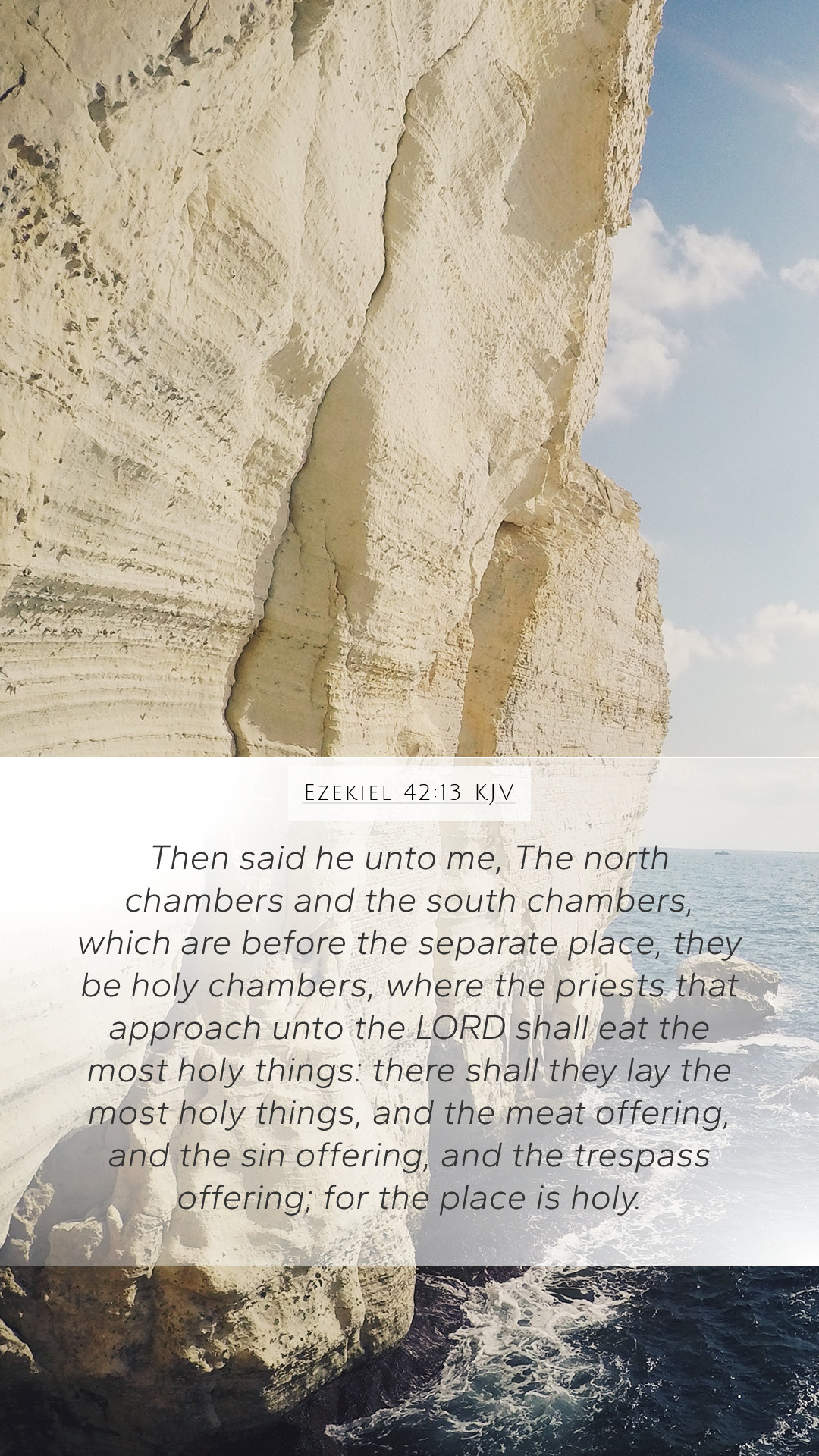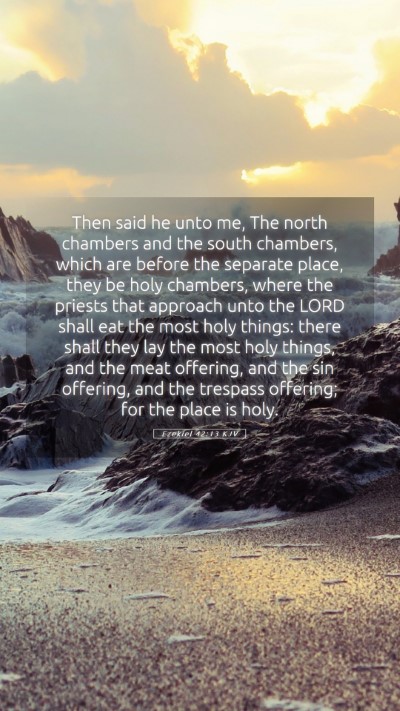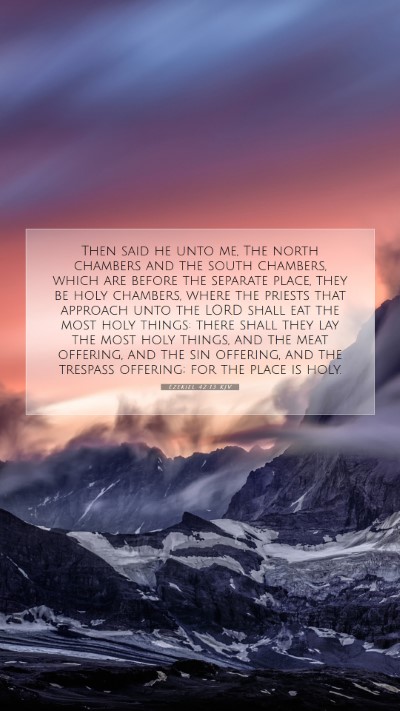Ezekiel 42:13 Bible Verse Explanation
The verse Ezekiel 42:13 provides significant insight into the structure and arrangement of the temple, which reflects God's order and holiness. Below is a detailed interpretation and commentary on this scripture, drawing from several public domain commentaries.
Verse Context
Ezekiel, a prophet during the Babylonian exile, receives a vision of a future temple. This vision is rich with symbolism and speaks to the restoration of worship and the presence of God among His people. Understanding this verse requires a look at the broader context of Ezekiel's prophecies, especially concerning the divine layout of the temple.
Meaning and Interpretation of Ezekiel 42:13
This verse states, "Then he said to me, 'The North chambers and the South chambers, which are before the separate place, they are the holy chambers, where the priests that approach unto the LORD shall eat the most holy things: there shall they lay the most holy things, and the meat offering, and the sin offering, and the trespass offering; for the place is holy.'" This passage carries several important meanings:
-
Holiness of the Chambers:
Matthew Henry emphasizes that these chambers signify a place set apart for the priests, underscoring the importance of holiness in worship. The chambers are described as "holy" which indicates that they are designated for sacred purposes, where offerings meant for God are stored.
-
Role of the Priests:
Albert Barnes points out that the priests had specific responsibilities regarding the offerings. The mention of the "meat offering," "sin offering," and "trespass offering" indicates that these chambers were integral to the sacrificial system, highlighting the priests' role as mediators between God and the people.
-
Divine Order:
Adam Clarke notes the significance of the organized structure of the temple and its chambers. God's specific instructions reveal His desire for order in worship. Each chamber's purpose serves to illustrate how God commands the conduct of His holy services.
-
Symbolism of Offerings:
The offerings mentioned are crucial in understanding sin, atonement, and the overall framework of Old Testament worship. These sacrifices foreshadow the ultimate sacrifice of Jesus Christ, offering profound biblical exegesis for New Testament believers.
-
Accessibility to God:
The layout reflects a level of accessibility to God through the priests, who serve as intermediaries. This anticipates the New Covenant, where access to God is granted to all through Christ's sacrifice.
Cross References
- Leviticus 6:16 - Discusses the provisions for priests using the offerings.
- Deuteronomy 18:1-2 - Establishing the priestly rights to certain sacrifices.
- Hebrews 9:23-26 - Explaining how these sacrifices foreshadowed Christ's ultimate sacrifice.
Application of Ezekiel 42:13 in Today's Context
Understanding this scripture can be transformative for modern believers. Here are some key applications:
-
Recognizing Holiness:
Believers should strive to honor the sacredness of their worship spaces and lives, understanding that God calls His people to holiness.
-
Appreciating Sacrifices:
Reflecting on the meaning of sacrifices can deepen one's appreciation for Jesus' sacrifice, encouraging gratitude and devotion in one's walk with God.
-
Value of Order in Worship:
Just as the chambers of the temple were organized, believers can benefit from establishing order in their personal and communal worship, making space for God’s presence.
Conclusion
Ezekiel 42:13 is not merely a historical account but a deep well of spiritual insight, reflecting God's desire for holiness, order, and accessibility in worship. For those seeking bible study insights or looking for bible verse explanations, this verse serves as a compelling reminder of God's enduring relationship with His people.


